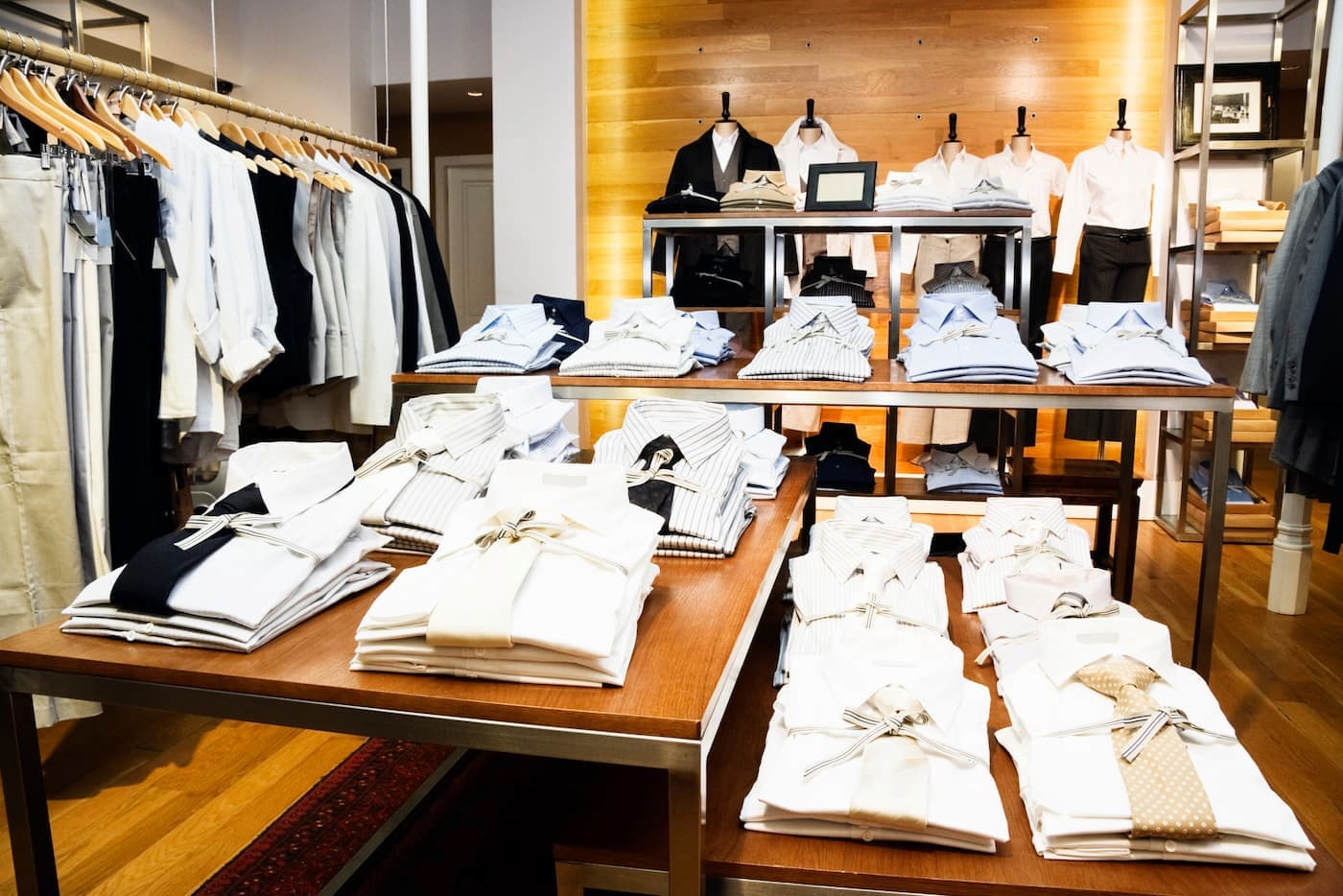How to maximize visual merchandising efforts
Editorial Team
6 min read
For any small business that sells physical products in-store, mastering the art and science of visual merchandising can be essential for long-term growth. This article explains the importance of visual merchandising – complete with tips on how to use this marketing strategy to help drive sales.
What is visual merchandising?
Visual merchandising is a type of marketing in which brick-and-mortar businesses use displays, lighting, colors, floor plans, and other visual cues to attract and convert customers. Although retailers are the primary pioneers in the space, many restaurants and service businesses employ aspects of visual merchandising to help increase sales as well.
Tackling a broad concept such as visual merchandising requires understanding the core principles that go into designing a truly integrated shopping experience that lures customers in – and keeps them coming back for more. Here are some examples of those principles.
1. Window displays
The primary goal of window displays is to get customers through the door. This is why some retailers often invest a lot of time and money into getting this right. For inspiration, check out our window display optimization guide.
2. Interactive touchscreens
Some businesses now leverage touchscreen technology to provide customers with everything from store maps to pricing information. Touchscreens can offer those who know what they want a self-service option, and for casual browsers, touchscreens are an engaging way to learn more about your products or services.
3. Point-of-sale (POS) technology
Some POS systems come with customer-facing screens, allowing you to show discounts at the checkout counter. Like touchscreens, POS technology also offers customers self-service options that help speed the sale.
4. Shelving and pricing
How you set up your shelves and end caps can have a huge impact on what customers notice – and ultimately buy. The same is true with how you present pricing information.
5. Mannequins
Generally, it’s better to “show” rather than “tell.” With mannequins, you can help customers better visualize themselves wearing clothes, shoes, and accessories.
6. Lighting design and general decor
There’s a reason why retailers use holiday decorations. Doing so can put customers in a shopping mood. The goal, of course, is to optimize your decor and lighting to help keep the sales going all year.
What are the benefits of visual merchandising?
The main goal of visual merchandising is to help boost sales by directing people’s attention to whatever products or services they need.
However, there are other advantages of visual merchandising, including:
- Customer engagement: Well-designed shopping experiences engage customers and help increase the likelihood they’ll return in the future.
- Improved marketing: Visual merchandising allows you to display promotions that help drive conversions. Depending on your POS solution, it may also be possible to capture customer information at checkout so you can follow up with customers post-sale or enroll them in email marketing campaigns or rewards programs.
- Brand loyalty: Visual merchandising isn’t limited to in-store shoppers. With a loyalty program, for example, you can continue the visual experience across other marketing channels such as email and social media.
How small businesses can improve their visual merchandising efforts
Below are 10 of the most effective visual merchandising strategies for maximizing customer engagement and increasing sales.
1. Use color theory
It’s a good idea to use well-established principles of color theory in which your visuals fall into one of the following:
- Monochromatic (i.e., various shades of the same color)
- Complementary (i.e., colors on opposite sides of the color wheel)
- Analogous (i.e., adjacent colors on the color wheel)
Note that these rules are not written in stone. It may sometimes make sense to use contrasting colors to highlight certain products.
2. Consider the height of displays
Grocery stores often put sugary cereals at children’s eye level for obvious reasons. You can adopt the same strategy in your business by placing the best-selling or highest-margin products at the optimal eye level for your target audience.
3. Utilize proper lighting
There is no one-size-fits-all for illumination. A wine shop, for example, might use softer ambient lighting – whereas a fashion boutique would want much brighter illumination for its inventory. Although technically not visual, studies have shown that the type and tempo of music can also directly impact sales.1
4. Avoid clutter
It’s best to avoid clutter in your shop. This may seem counterintuitive, since most retailers want to maximize floor space. However, cramped interiors can make customers feel overwhelmed or confused, and maybe even cause them to miss seeing products that they want or need.
5. Make price points clear
Forcing users to search for prices adds unnecessary friction to the shopping experience. Make your prices as clear and as easy to find as possible, whether by having individual price tags attached to each item, or easily visible signage above or near the display.
6. Optimize high foot-traffic zones
Good visual merchandisers install their most important inventory in high foot-traffic areas. Great visual merchandisers create high foot-traffic. To learn how, read our article on using real-time promotions to attract and delight your customers.
7. Abide by display principles
There are many best practices in visual merchandising, but two of the most common display principles are the Rule of Three and the Pyramid Principle:
- According to the Rule of Three, our eyes are naturally drawn to asymmetry – such as when items on shelves (or mannequins in windows) are grouped in batches of three.
- According to the Pyramid Principle, it’s best to install the largest items at the bottom of your displays and the smallest ones toward the top (similar to a pyramid).
8. Utilize visual merchandising at the checkout counter
The checkout counter is the last touchpoint before customers leave your store. As such, it’s also the last opportunity to upsell customers or capture their information during that visit. Be sure to optimize the checkout experience using these display tips.
9. Rotate displays occasionally
Many businesses update their displays just before or after major holidays. It’s important to rotate your displays periodically throughout the year. Doing so can help keep your storefront fresh and interesting for your most loyal customers.
10. Incorporate technology
Good visual merchandising can help draw foot traffic and keep customers coming back, but it can become easier to retain customers with the power of technology. For example, small businesses that use Clover’s payment processing solutions can use their POS solutions to:
- Sync data with their CRM platforms to better understand their customers’ needs and behaviors.
- Create promotions, sell gift cards, and manage loyalty programs directly through their POS dashboards.
- Run detailed reports and analytics to see top-selling products and make adjustments to their visual merchandising strategy.
To learn how our POS solutions can help with your visual merchandising efforts, schedule a free consultation with our merchant services team today.
1 “The Subliminal Influence of Ambient Music on Shoppers,” Psychologist World
Related Posts
What is paperless payroll?
How to get a small business loan
Popular Topics
Stay in touch
Sign up and learn more about Clover.
Thank you for your subscription!
More posts about starting a small business
eBook
Retail roadmap: Financial goal-setting for the year ahead
Please share your contact information
to access our premium content.
Thank you for sharing your contact information.
Download Now





